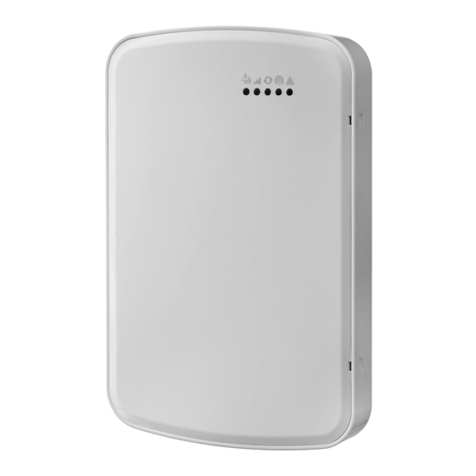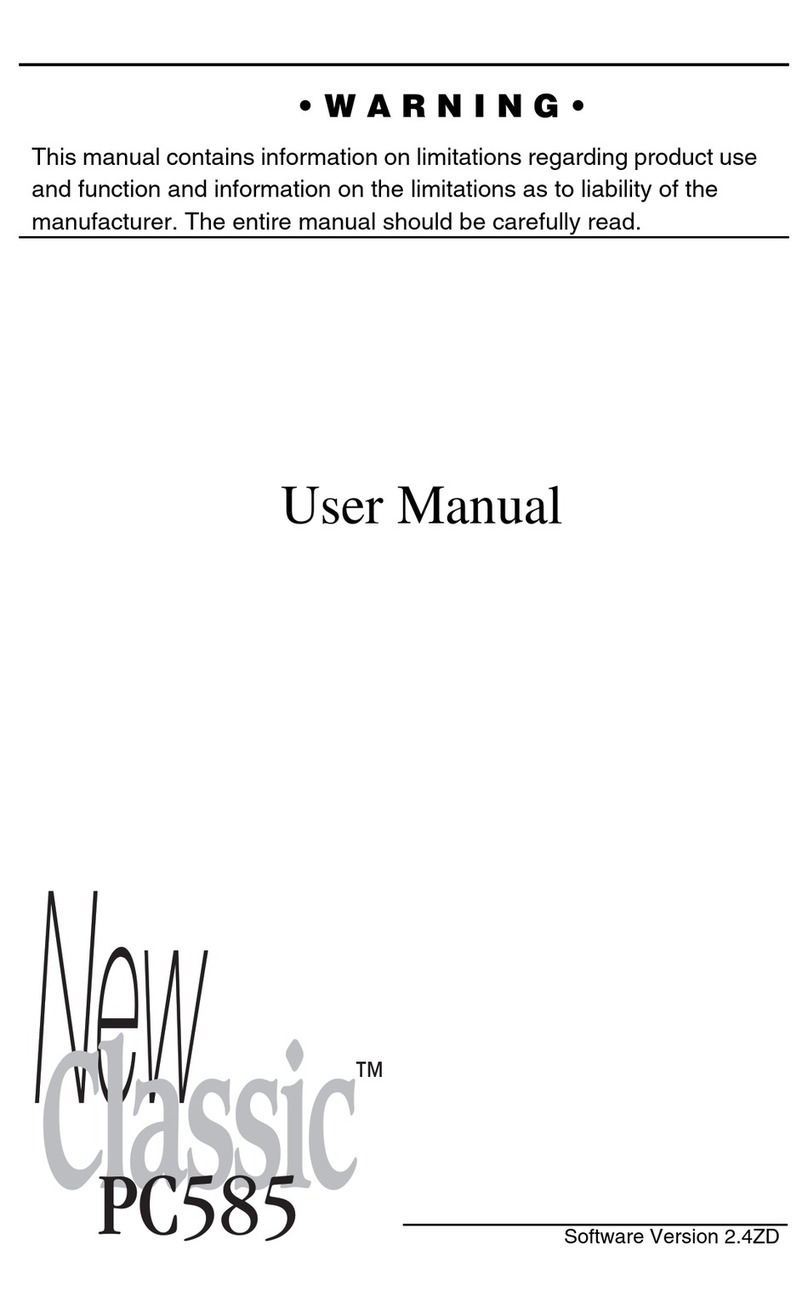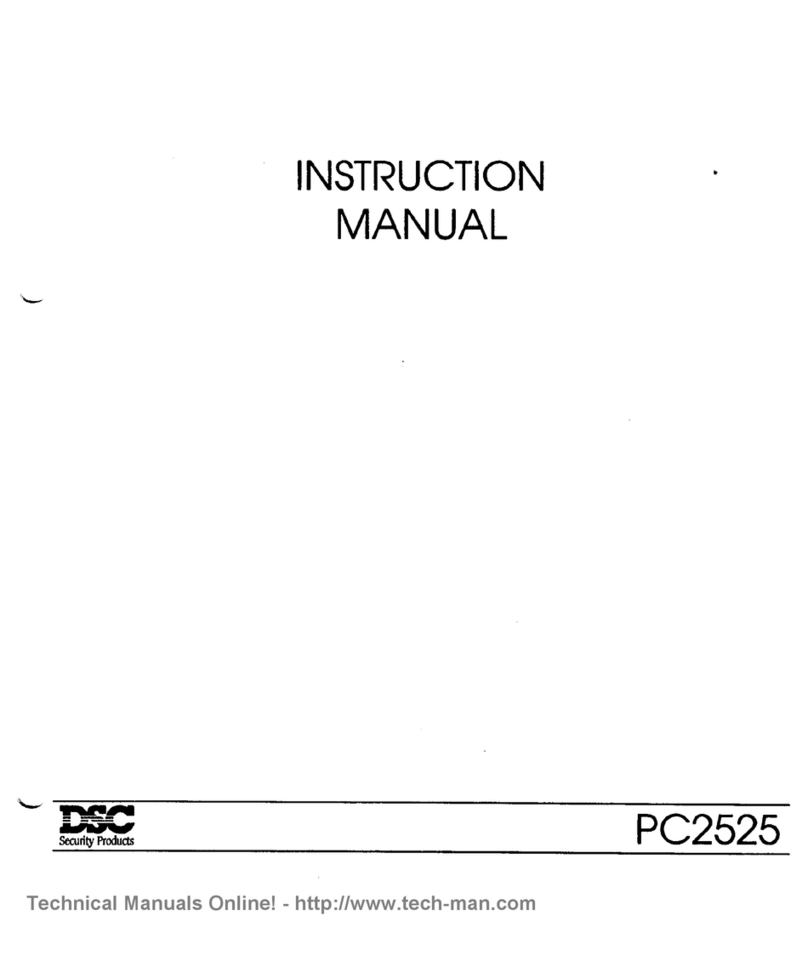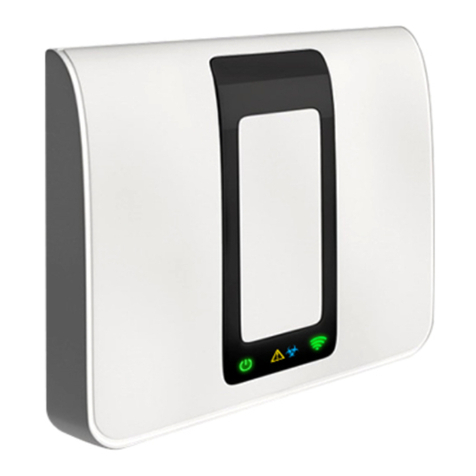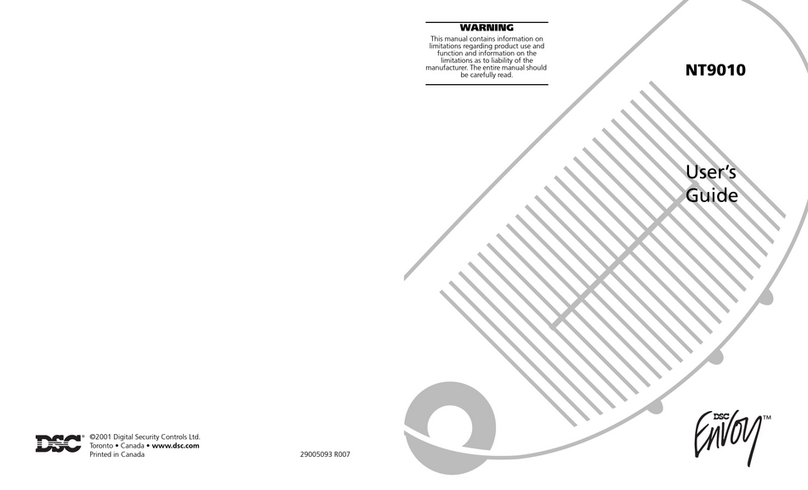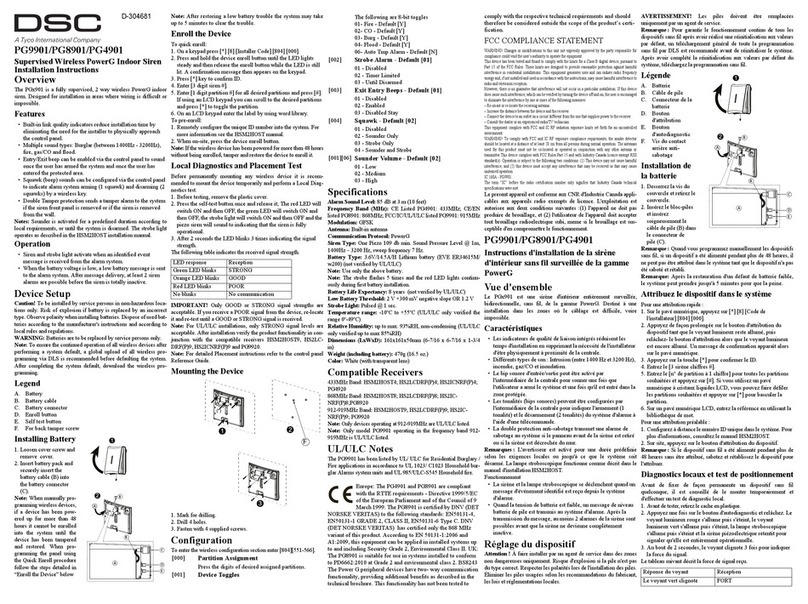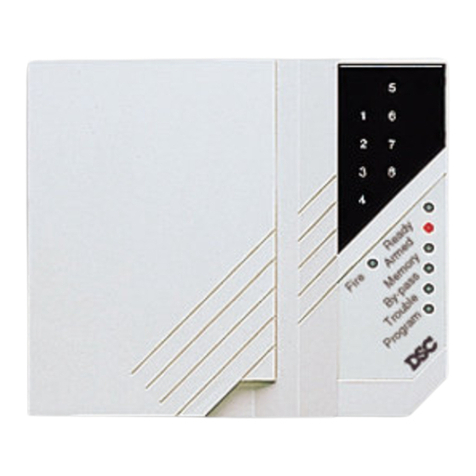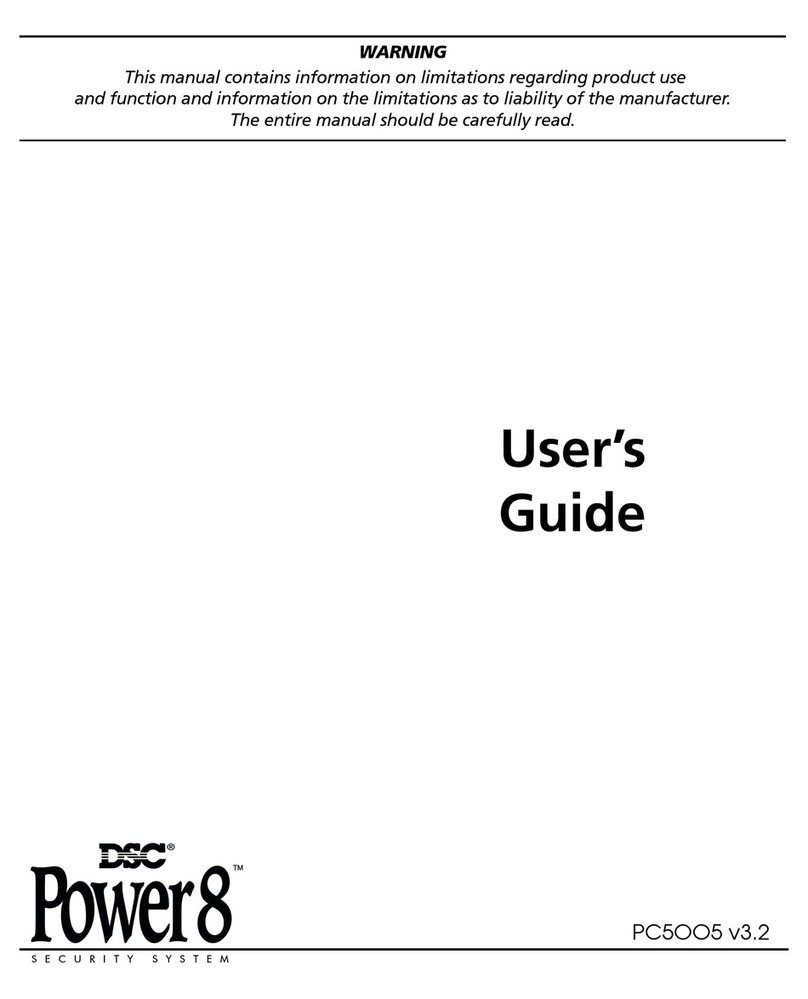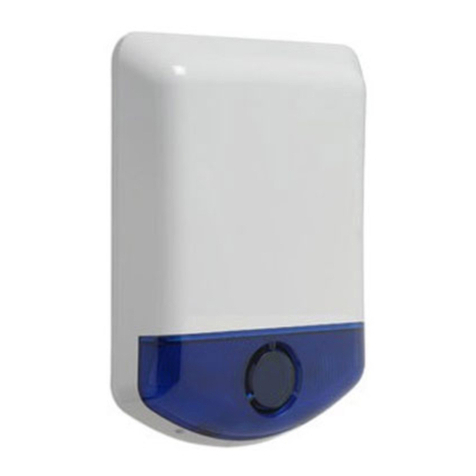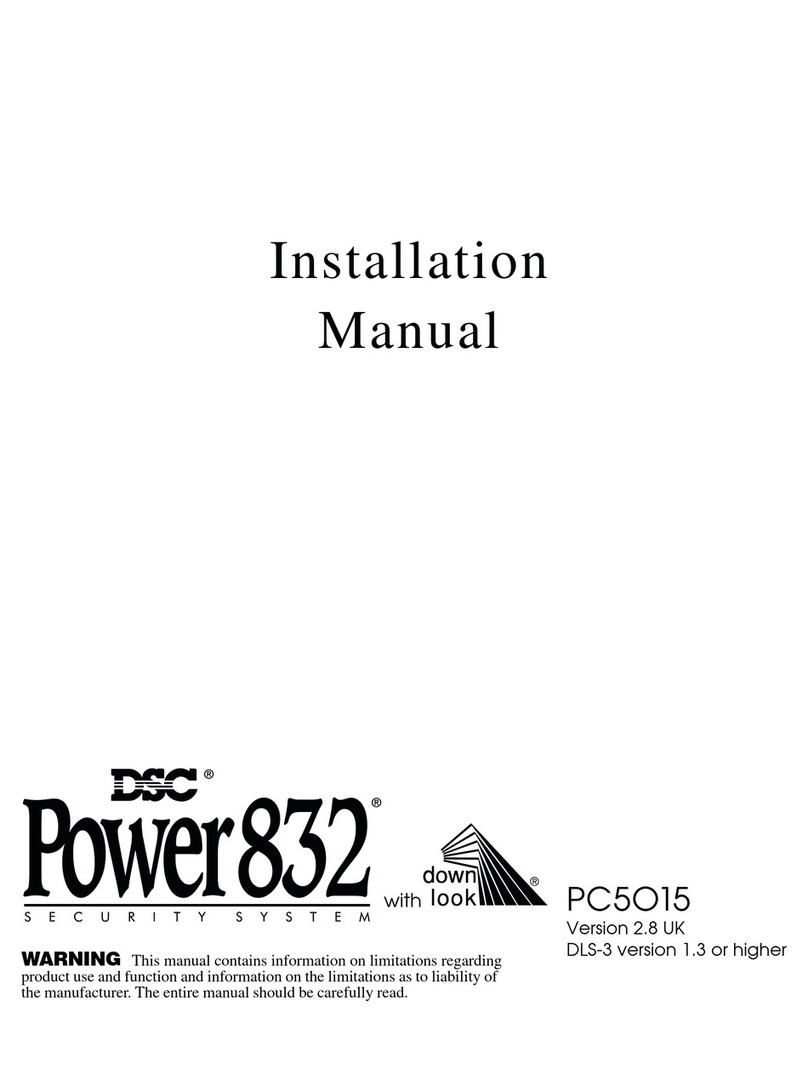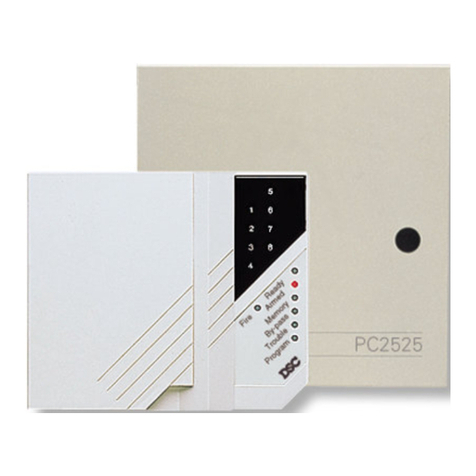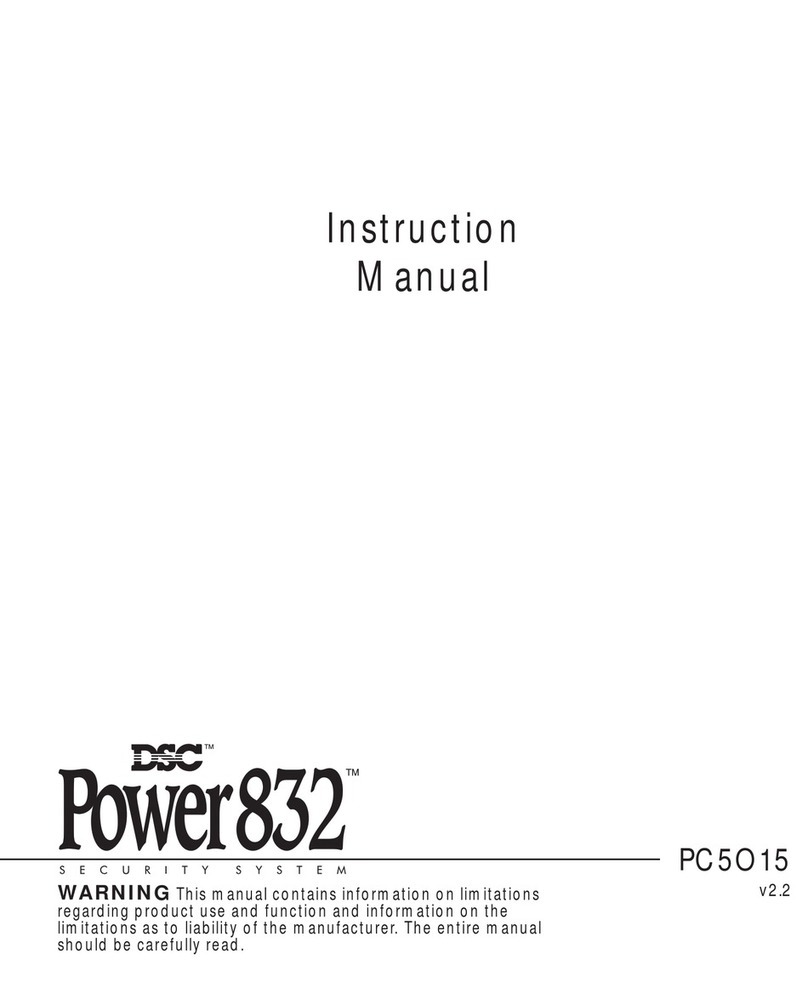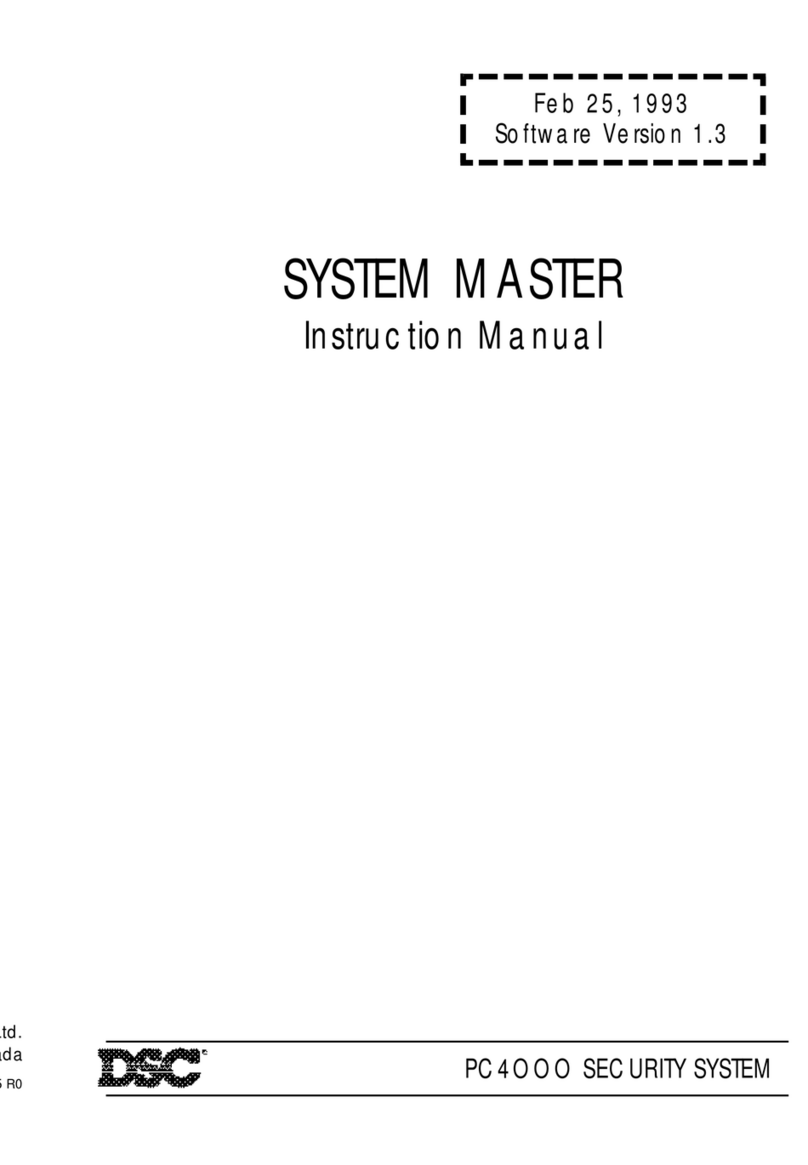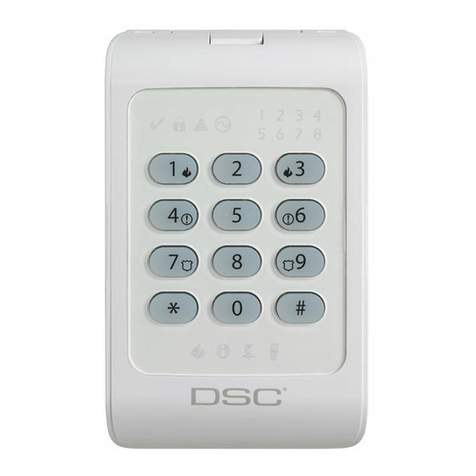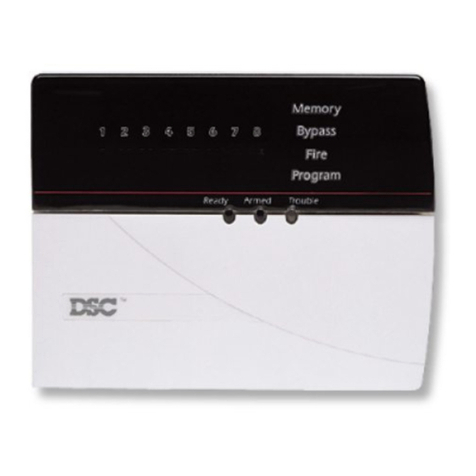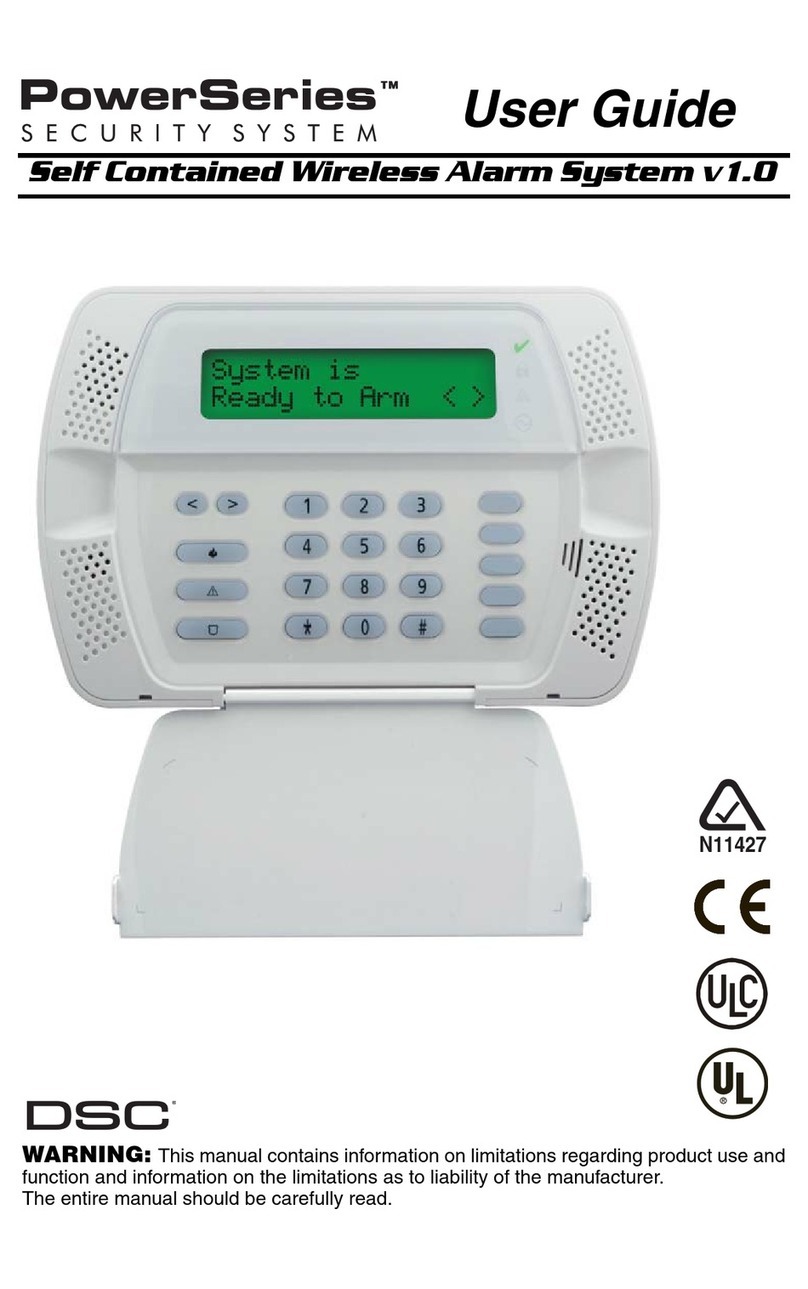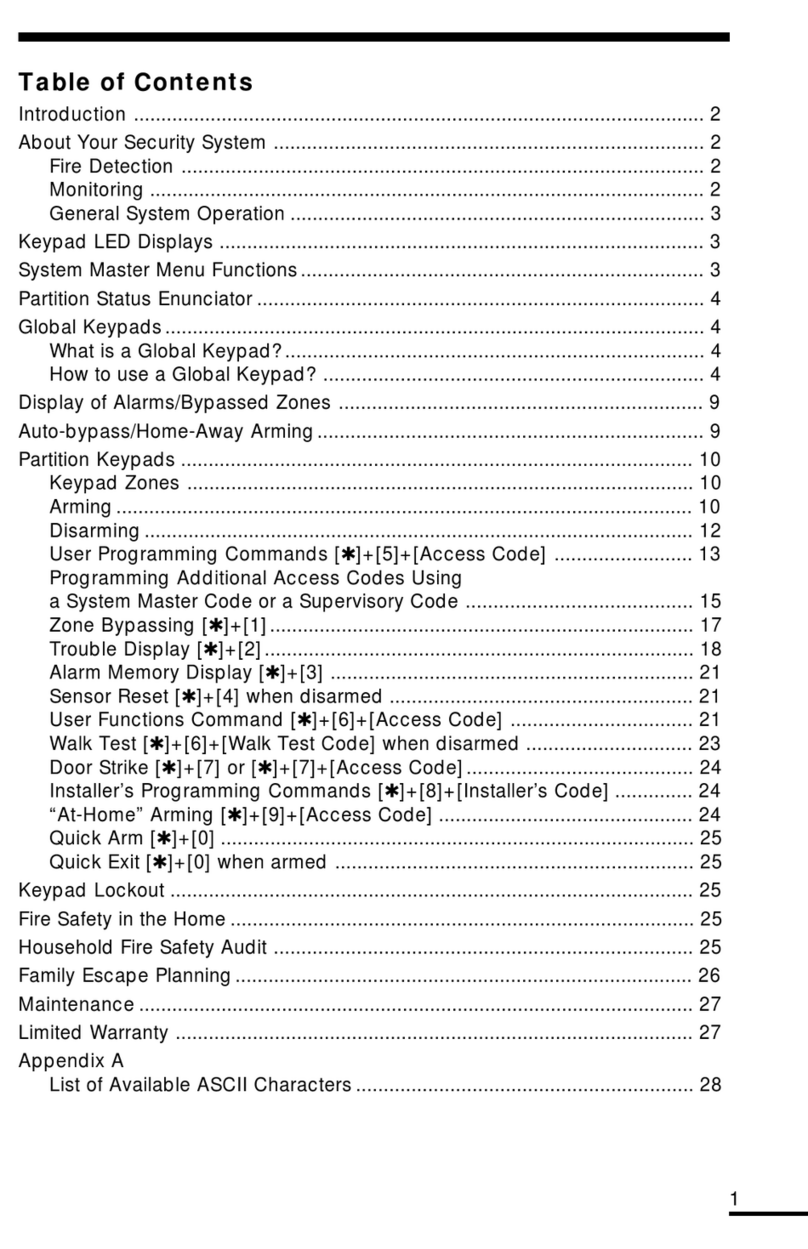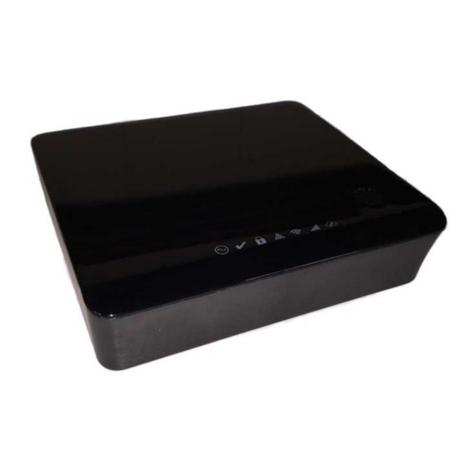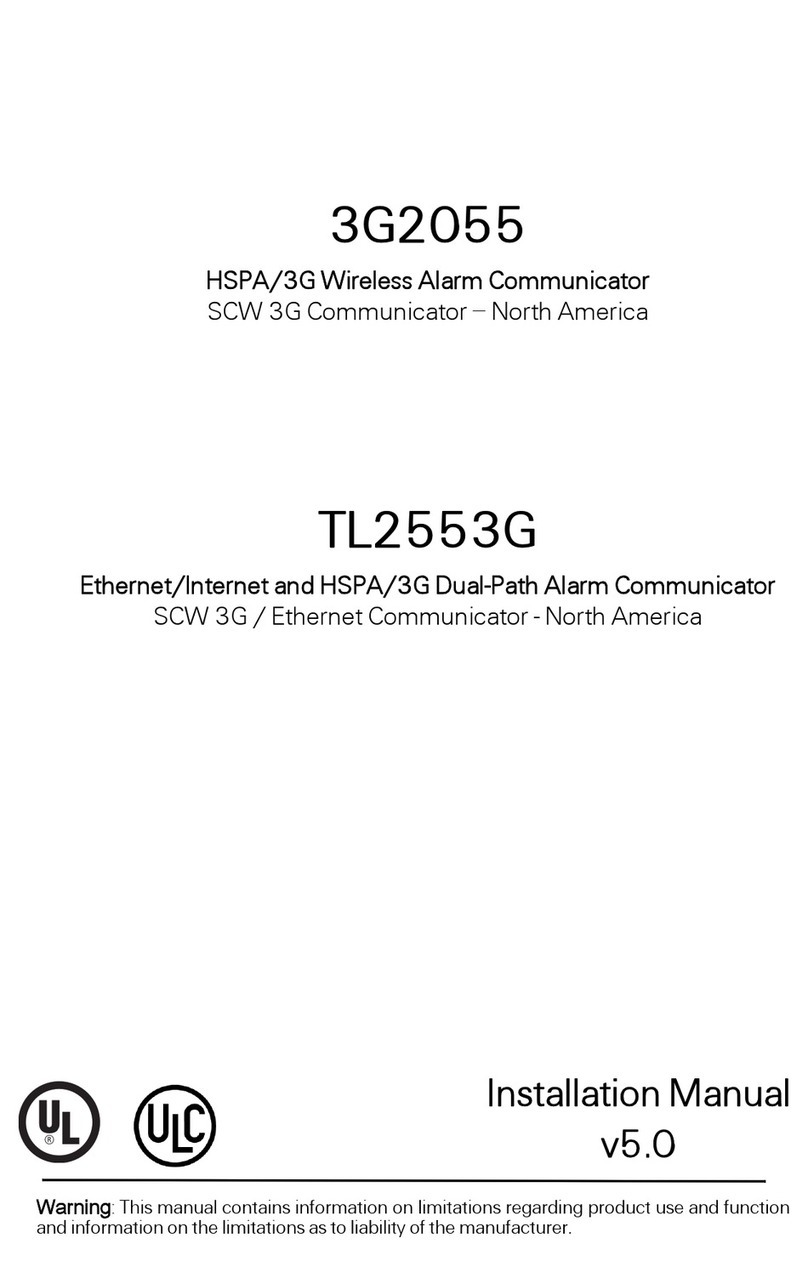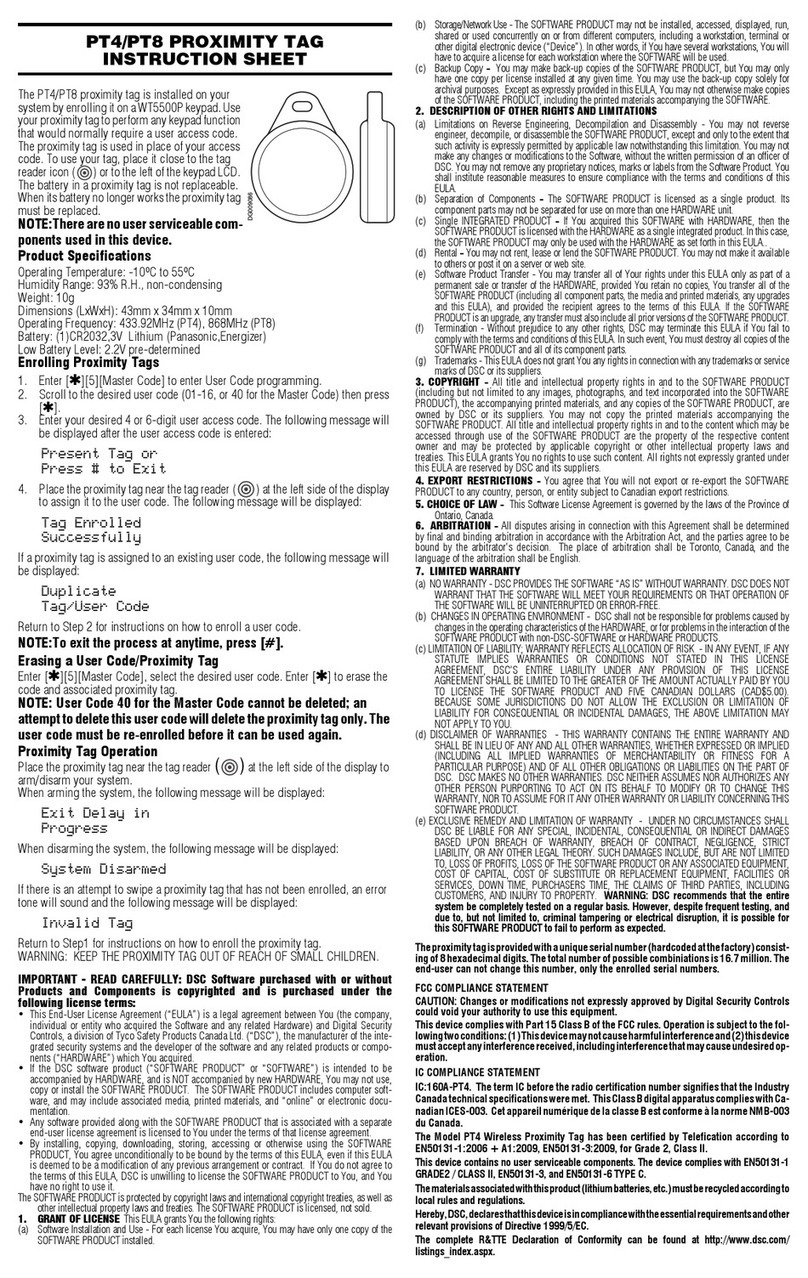
1
TABLE OF CONTENTS
Features 2
Keypad Programmable ..................................................................... 2
EEPROM Memory .............................................................................. 2
Static/Lightning Protection ................................................................ 2
Supervision ........................................................................................ 2
Operation ........................................................................................... 2
Specifications 2
PC1550 Control Panel ........................................................................ 2
PC1500RK Keypad ............................................................................ 2
Installation 3
Mounting the Panel ............................................................................ 3
Mounting the Keypad ........................................................................ 3
Auxiliary Power Connection ............................................................... 3
PGM Terminal Connections ............................................................... 3
Bell/Siren Connection ........................................................................ 3
Keypad Wiring ................................................................................... 3
Fire Zone Wiring ................................................................................. 3
Burglary Zone Wiring ......................................................................... 3
AC Power Wiring ................................................................................ 3
Battery Connection ............................................................................ 3
Telephone Line Wiring ....................................................................... 3
Wiring Routing for Power & Non-Power Limited ............................... 3
Keypad Functions 3
Introduction ........................................................................................ 3
Master Code ...................................................................................... 3
2nd Master Code ............................................................................... 3
Installer’s Programming Code ........................................................... 3
Arming ................................................................................................ 3
Auto-Bypass/Home-Away Arming ..................................................... 4
Arming Without Entry Delay .............................................................. 4
Disarming ........................................................................................... 4
Zone Bypassing ................................................................................. 4
Trouble Conditions ............................................................................ 4
Alarm Memory .................................................................................... 4
Downloading Call-Up Command ...................................................... 4
User Programming Commands ......................................................... 5
EEPROM Reset .................................................................................. 5
User Function Commands ................................................................. 5
Utility Output Command .................................................................... 5
Installer’s Programming Command ................................................... 6
Arming without Entry Delay ............................................................... 6
Arming For The Night ........................................................................ 6
Quick-Exit Command ......................................................................... 6
Quick-Arm Command ........................................................................ 6
Keypad Zones ................................................................................... 6
Programming Guide 6
Introduction ........................................................................................ 6
Programming ..................................................................................... 6
Program Data Review ........................................................................ 6
Binary Data Display ........................................................................... 7
HEX Data Programming .................................................................... 7
Programming Sections 7
[00] Binary Programming .................................................................. 7
[01] 1st Phone Number ..................................................................... 7
[02] 1st Account Code ...................................................................... 7
[03] 2nd Phone Number .................................................................... 7
[04] 2nd Account Code ..................................................................... 7
[05] to [10] Reporting Codes ............................................................ 7
[05] Zone Alarm Reporting Codes .................................................... 7
[06] Zone Restoral Reporting Codes ................................................ 8
[07] Closing (Arm ing) Reporting Codes .......................................... 8
Partial Closing Reporting Code ......................................................... 8
[08] Opening (Disarming) Reporting ................................................ 8
Codes After Alarm Reporting Code .................................................. 8
[09] Priority Alarms and Restorals .................................................... 8
[10] Maintenance Alarms and Restorals ........................................... 8
[11] Zone Definitions ......................................................................... 8
[12] 1st System Option Code ............................................................ 9
[13] 2nd System Option Code .......................................................... 9
[14] 3rd System Option Code ........................................................... 9
[15] Communication Variables ........................................................ 10
[16] Zone Bypass Mask .................................................................. 10
[17] System Times ........................................................................... 10
[18] Auxiliary Delay Loop ................................................................ 10
Entry/Exit Times ............................................................................... 10
[19] System Clock Times ................................................................. 10
[20] New Installer’s Code ................................................................ 10
[21] New Master Code .................................................................... 10
[22] 2nd Master Code ..................................................................... 10
[23] Communication Formats .......................................................... 10
[24] Programmable Output Options ................................................ 11
PGM Terminal .................................................................................. 11
[25] Communicator Call Directions ................................................. 11
[26] Downloading Telephone Number ............................................ 11
[27] Downloading Access Code ..................................................... 12
[28] Panel Identification Code ......................................................... 12
[29] Number of Rings Before Answering ........................................ 12
[30] Reset to Factory Default .......................................................... 12
[31] 4th System Option Code .......................................................... 12
[32] 5th System Option Code .......................................................... 12
[33] Answering Machine Double Call Timer ................................... 12
[34] 6th System Option Code .......................................................... 12
[35] LINKS1000 Test Reporting Code ............................................ 12
[36] Keypad Lockout Control .......................................................... 13
[90] Installer’s Lockout Enable ........................................................ 13
[91] Installer’s Lockout Disable ....................................................... 13
Guidelines for Locating Smoke Detectors 13
For the Record 14
Programming Worksheets 15
PC1550 Control Panel Wiring Diagram 20
UL Listed Residential Installations Inside back cover
NOTES FOR UL INSTALLATIONS
This equipment is UL listed in accordance with standard UL1023
(Household Burglar - Alarm System Units), standard UL985 (Household
Fire Warning Units) and UL1635 (Digital Alarm Communicator System
Units).
This equipment has the capability of being programmed for operational
features that are not allowed for UL recognized installations. To stay
within the standard for household applications, the installer should use
the following guidelines when configuring the system.
1. ALL components of the system should be UL listed for the intended
application. Note elsewhere in this manual, recommendations for
smoke detectors and battery to be used with this equipment.
2. If this system is configured for “Fire”, the installer should refer to
NFPA Standards #74 for details on locating smoke detectors. When
the "Fire" feature is enabled, there must be at least one UL recognized
indoor Fire Alarm Warning Signaling Appliance.
3. Maximum allowed entry time = 45 seconds
Maximum allowed exit time = 60 seconds
Minimum allowed bell cutoff time = 4 minutes
4. User bypass must be enabled so that a user code is required to
bypass zones.
5. The installer should caution the user to NOT give system information
to casual users. Eg. Codes, bypass methods, etc. to babysitters or
home service people. Only the “One-Time” use code should be
given to the casual user.
6. The installer should advise the user and note in the user manual:
• Service organization name and telephone number
• The programmed exit time
• The programmed entry time
7. Remote programming must be disabled.
8. The Master Code should be changed from the factory default setting
and the new Master Code recorded in the User Manual.
9. To achieve 24 hour battery stand-by, the combined AUX and Alarm
Load shall not exceed 90mA and 600mA respectively. A 12V 7.0Ah
sealed lead-acid battery shall be employed.
